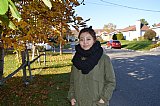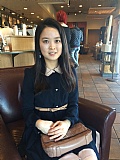Introduction
This article serves as a guide for individuals interested in learning how to greet others in the Korean language. It aims to provide a detailed overview of the most common greetings, including their pronunciation and English translations. The focus is on facilitating a deeper understanding of the cultural significance behind these greetings and the appropriate contexts in which they are used. By emphasizing the importance of respect and etiquette in Korean interactions, the guide seeks to equip readers with the knowledge necessary to engage in polite and meaningful conversations. Through this exploration, learners and cultural enthusiasts can gain insights into the fundamental aspects of Korean social norms and communication practices.
The Basics of Korean Greetings
Korean Language Overview
Korean, the primary language of South and North Korea, is a significant part of the cultural identity of over 75 million speakers worldwide. Characterized by its unique alphabet, Hangul, developed in the 15th century, it stands out for its scientific design and ease of learning. The language incorporates various levels of formality in its structure, reflecting the societal emphasis on hierarchy and respect.
The Significance of Greetings
In Korean culture, greetings are not merely a form of saying hello; they are a crucial aspect of daily interactions that reflect the speaker's respect and consideration for others. These greetings vary depending on the age, social status, and closeness of the relationship between the individuals involved. Understanding and using these greetings correctly is essential for anyone looking to navigate Korean society effectively.
Common Greetings and Their Contexts
The most universally recognized Korean greeting is "Annyeonghaseyo" (안녕하세요), which translates to "Hello" or "How are you?" in English. This phrase is appropriate in most situations, striking a balance between politeness and general friendliness. It serves as a versatile greeting, suitable for both individuals you are meeting for the first time and those you have a standing relationship with, provided the context is not overly informal.
For more casual interactions, particularly among peers or close friends, "Annyeong" (안녕) is commonly used. This shorter, more informal variant reflects a degree of familiarity and comfort between the speakers. However, it's crucial to gauge the relationship's closeness before using informal language, as presuming familiarity too early can be considered disrespectful.
Formal vs. Informal Speech
The Korean language features a distinction between formal (존댓말 jon-daet-mal) and informal speech (반말 ban-mal), deeply ingrained in its cultural context. Formal speech is used in most public interactions, especially with those older or of higher status, to show respect. In contrast, informal speech is reserved for close friends, family, and those of a similar or younger age, where a mutual understanding exists that formalities can be relaxed.
Greeting Someone for the First Time
When meeting someone for the first time in Korea, it is crucial to use the appropriate level of formality and respect in your greeting. This initial interaction sets the tone for the relationship and demonstrates your awareness of Korean social etiquette.
"Annyeonghaseyo" (안녕하세요): The Go-to Greeting
The standard greeting to use when meeting someone for the first time is "Annyeonghaseyo," which translates to "Hello" or "How are you?" in English. This phrase is polite and formal enough for most introductory situations, whether you're meeting someone in a business setting, a casual social event, or when addressing someone of higher status or older age. The pronunciation, focused on clarity and a gentle tone, is key to delivering this greeting correctly.
Understanding Formality in Korean Culture
The concept of formality is deeply embedded in Korean culture, influencing not only language but also behaviors and gestures. Using formal language when meeting someone for the first time shows respect and acknowledges social hierarchies, an essential aspect of Korean interactions. This level of formality is maintained until the other person indicates that a more informal tone can be adopted, usually by suggesting the use of less formal language or by initiating it themselves.
The Role of Honorifics
In addition to using the formal version of "hello," incorporating honorifics when referring to or addressing someone directly is a key aspect of polite Korean speech. Honorifics are titles or forms of address that signify the subject's social status or age relative to the speaker. They are used to show respect and can be attached to names or used in place of personal names when speaking to or about someone.
First Impressions and Body Language
The verbal greeting is often accompanied by a bow, which varies in depth depending on the level of respect being conveyed. A slight bow, from the waist, with eyes looking down, is common when meeting someone for the first time. This gesture complements the verbal greeting and reinforces the respect and formality of the interaction.
Navigating Age and Status
Age and social status play significant roles in determining the appropriate level of formality in a greeting. When in doubt, erring on the side of formality is advisable. It is also respectful to inquire about the other person's age in a polite manner if age is relevant to the social context, as this information helps determine the correct level of formality and language to use.
Pronunciation Tips
Pronouncing Korean greetings correctly is essential for effective communication and showing respect to the language and its speakers. This section provides tips to help you master the pronunciation of common Korean greetings, ensuring your efforts in learning the language are both appreciated and understood.
Breaking Down Sounds
Korean pronunciation can be challenging for learners, particularly because some sounds do not have direct equivalents in English. Breaking down each syllable of a greeting can help in understanding how to pronounce it correctly.
- "Annyeonghaseyo" (안녕하세요): This greeting can be broken down into syllables as An-nyeong-ha-se-yo. Focus on the soft "n" sound at the beginning, which is lighter than the English "n". The "eo" in "nyeong" and "se" is similar to the English "uh" but with a slightly more open mouth.
Consonants and Vowels
Korean has a distinct set of consonants and vowels that can change meaning based on their pronunciation. Paying close attention to these differences is key.
-
Consonants: Some Korean consonants, like ㄱ (g/k), ㄷ (d/t), and ㅂ (b/p), have sounds that can change slightly based on their position in a word. Practice these sounds in different contexts to get accustomed to their variations.
-
Vowels: Korean vowels can be tricky, especially since some have no direct English equivalent. The vowel ㅓ (eo) in "Annyeonghaseyo" is a prime example; it's pronounced with the mouth slightly more open than for the English "uh".
Stress and Tone
Korean is not a tonal language like Mandarin or Vietnamese, but stress and intonation still play a role in communication.
-
Stress: Korean words generally have even stress across syllables, unlike English which often has stressed and unstressed syllables. Practice speaking Korean phrases with a steady, even tone.
-
Tone: While Korean does not use tone to differentiate words, the intonation can convey emotion or emphasis. Listen to native speakers and try to mimic their intonation patterns in greetings and other phrases.
Listening and Repeating
One of the most effective ways to improve your pronunciation is by listening to native speakers and repeating what they say.
- Use language learning apps, Korean dramas, or YouTube tutorials to hear the correct pronunciation.
- Repeat greetings out loud, trying to mimic the intonation and stress patterns of native speakers. Recording yourself and comparing with native speakers can also be beneficial.
Practice with Feedback
Practicing speaking Korean with native speakers or language exchange partners can provide valuable feedback on your pronunciation.
- Don't be afraid to ask for corrections or tips on how to pronounce words more naturally.
- Engaging in conversation will also help you get used to the flow and rhythm of the Korean language, making it easier to remember pronunciation rules.
Other Common Greetings and Phrases
Beyond the basic "Annyeonghaseyo," Korean language offers a variety of greetings and phrases that are essential for daily communication. This section explores additional common expressions, providing English translations and pronunciation tips to help you expand your conversational skills in Korean.
Morning, Afternoon, Evening Greetings
-
Good Morning: "Joheun achim" (좋은 아침) is how you say "Good morning" in Korean. Pronounced as Joh-eun ah-chim, it's a friendly way to greet someone at the start of the day.
-
Good Afternoon: While there isn't a direct equivalent for "Good afternoon" in Korean, you can use "Annyeonghaseyo" throughout the day. For a time-specific greeting, Koreans often just use the time of day, such as "Ohu" (오후) for afternoon, with a polite greeting.
-
Good Evening: "Joheun jeonyeok" (좋은 저녁) means "Good evening." Pronounce it as Joh-eun juh-nyuk. This phrase is suitable for greeting someone in the later part of the day.
Expressing Gratitude
- Thank You: "Gamsahamnida" (감사합니다) is the standard way to say "Thank you" in Korean, suitable for most situations due to its formal tone. Pronunciation: Gam-sa-ham-ni-da. For a less formal expression, "Gomawo" (고마워) can be used among friends or those younger than you.
Saying Goodbye
-
When Someone is Leaving: "Annyeonghi gaseyo" (안녕히 가세요) is used to say goodbye to someone who is leaving. Pronounced An-nyeong-hi ga-se-yo, it wishes the person a peaceful departure.
-
When You are Leaving: Conversely, "Annyeonghi gyeseyo" (안녕히 계세요) is what you say when you're the one leaving, and you're wishing those staying behind to be well. Pronunciation: An-nyeong-hi gye-se-yo.
Wishing Well
- Have a Good Day: "Joheun haru doeseyo" (좋은 하루 되세요) is a polite way to wish someone a good day. Pronounced as Joh-eun ha-ru doe-se-yo, it's a kind gesture that can brighten someone's day.
Asking How Someone Is
- How Are You?: "Eotteoke jinaeseyo?" (어떻게 지내세요?) is a formal way to ask someone how they are doing. Pronounced Eo-tteo-ke ji-nae-se-yo, it shows concern for the person's well-being.
Cultural Notes on Usage
While learning these phrases, it's essential to understand the context in which they're used. The level of formality in your speech should match your relationship with the other person and the situation. Observing how Koreans interact and using these phrases in appropriate contexts will help you navigate social situations more effectively.
Familiarizing yourself with these common greetings and phrases not only enriches your vocabulary but also enhances your ability to engage in meaningful interactions. By practicing these expressions, you'll be better prepared to communicate respectfully and effectively in a variety of settings. Remember, the key to mastering Korean greetings lies in understanding the cultural nuances that inform their usage.
Cultural Nuances in Greetings
Korean greetings are not just about the words spoken; they are deeply intertwined with cultural practices and nuances. Understanding these aspects is crucial for anyone looking to communicate effectively and respectfully in Korean contexts. This section delves into the cultural underpinnings of Korean greetings, offering insights into the practices that accompany verbal expressions of hello, goodbye, and well-wishes.
The Importance of Bowing
Bowing is a significant gesture in Korea, often accompanying greetings. The depth and duration of the bow can convey different levels of respect or formality.
-
Slight Nod: A small nod of the head is common when saying "Annyeonghaseyo" in casual or informal situations. It's a gesture of acknowledgment and friendliness.
-
Formal Bow: In more formal settings or when expressing a deep sense of gratitude or apology, a bow from the waist is appropriate. The angle of the bow may vary, but a deeper bow generally signifies greater respect or sincerity.
Eye Contact and Body Language
While eye contact is a sign of confidence and honesty in many cultures, it can be perceived differently in Korea, especially in formal situations or when interacting with someone of higher status.
-
Moderation in Eye Contact: Maintaining moderate eye contact, without staring, is polite. It shows attentiveness while respecting the other person's space.
-
Body Language: Standing with a straight posture and avoiding large gestures or movements while greeting someone reflects respect and is considered good etiquette in Korea.
Addressing Others Respectfully
Using titles and honorifics is an integral part of Korean greetings. Addressing someone properly can be as crucial as the greeting itself.
-
Use of Titles: Incorporating a person's title or position with their name, or using professional titles alone, is common. For instance, addressing a teacher as "Seonsaengnim" (선생님) shows respect.
-
Honorifics in Language: The Korean language has specific honorific forms that elevate the status of the person being talked about or addressed. Using these forms, especially with elders or in formal situations, is a sign of good manners.
Sensitivity to Context
The appropriateness of different greetings depends on the social setting and the relationship between the people involved.
-
Formal vs. Informal Settings: In formal settings, such as business meetings or when meeting someone for the first time, use formal greetings and avoid casual language. In contrast, informal greetings are suitable among close friends and family.
-
Understanding Relationships: The nuances of Korean social hierarchy, based on age, job position, and social status, influence greeting practices. Being aware of these dynamics helps in choosing the correct form of greeting.
Conclusion
Mastering the art of greeting in Korean transcends the mere acquisition of phrases and words; it is an immersive journey into the heart of Korean culture and etiquette. This article has explored the foundational greetings, from the universally recognized "Annyeonghaseyo" to expressions of gratitude and well-wishes, providing pronunciation guides and translations to assist learners in their language acquisition journey. More importantly, it has delved into the cultural nuances that underpin these greetings, emphasizing the significance of bowing, appropriate body language, and the use of honorifics.
Understanding and employing these greetings within their proper contexts reflects not only a respect for the language but also for the rich traditions and social etiquettes that define Korean society. The nuances of bowing, the subtleties of formal versus informal speech, and the importance of body language in communication are all critical elements that enhance the depth and meaningfulness of interactions in Korean.
As language learners, embracing these cultural nuances is essential for fostering genuine connections and navigating social interactions with grace and respect. The journey of learning Korean is one of cultural immersion, where language serves as a bridge to understanding and appreciating the complexities of Korean social dynamics.















